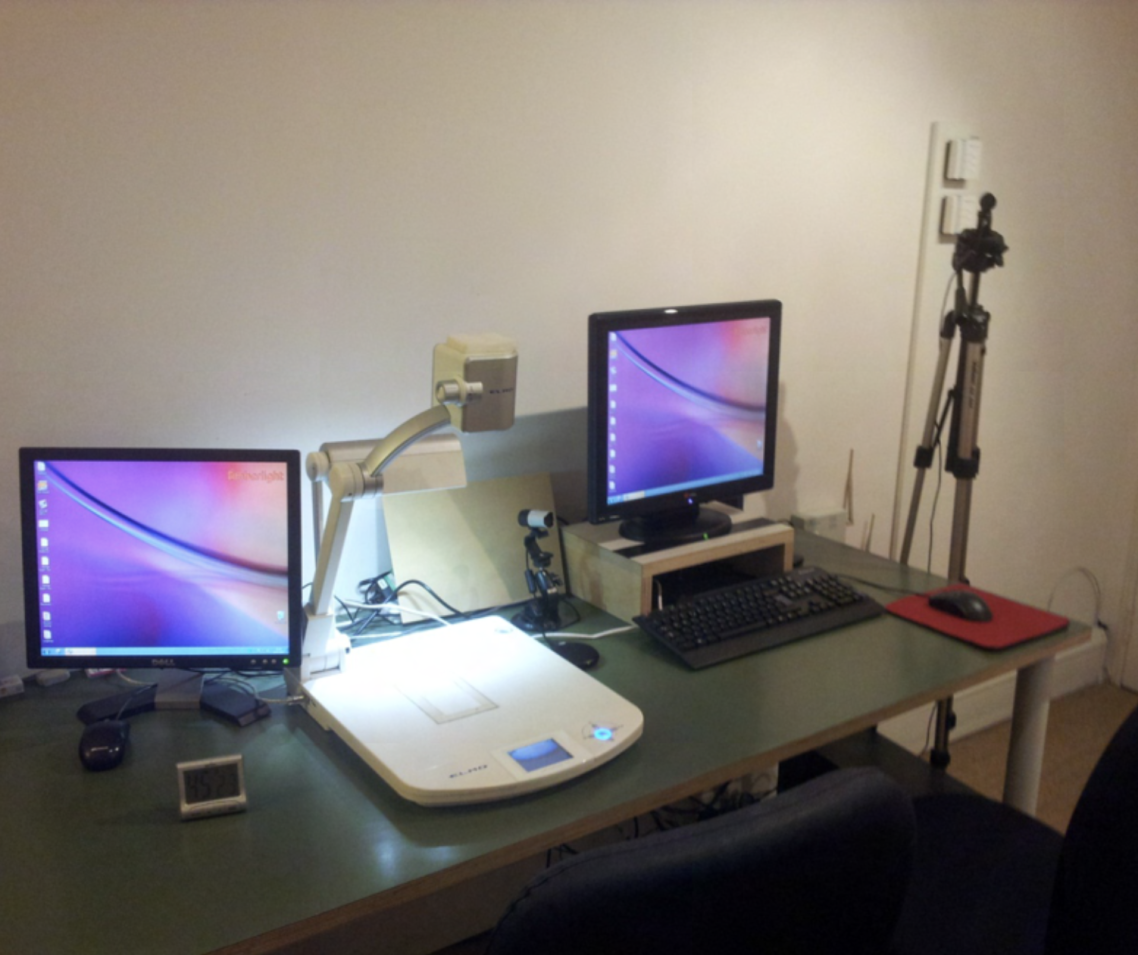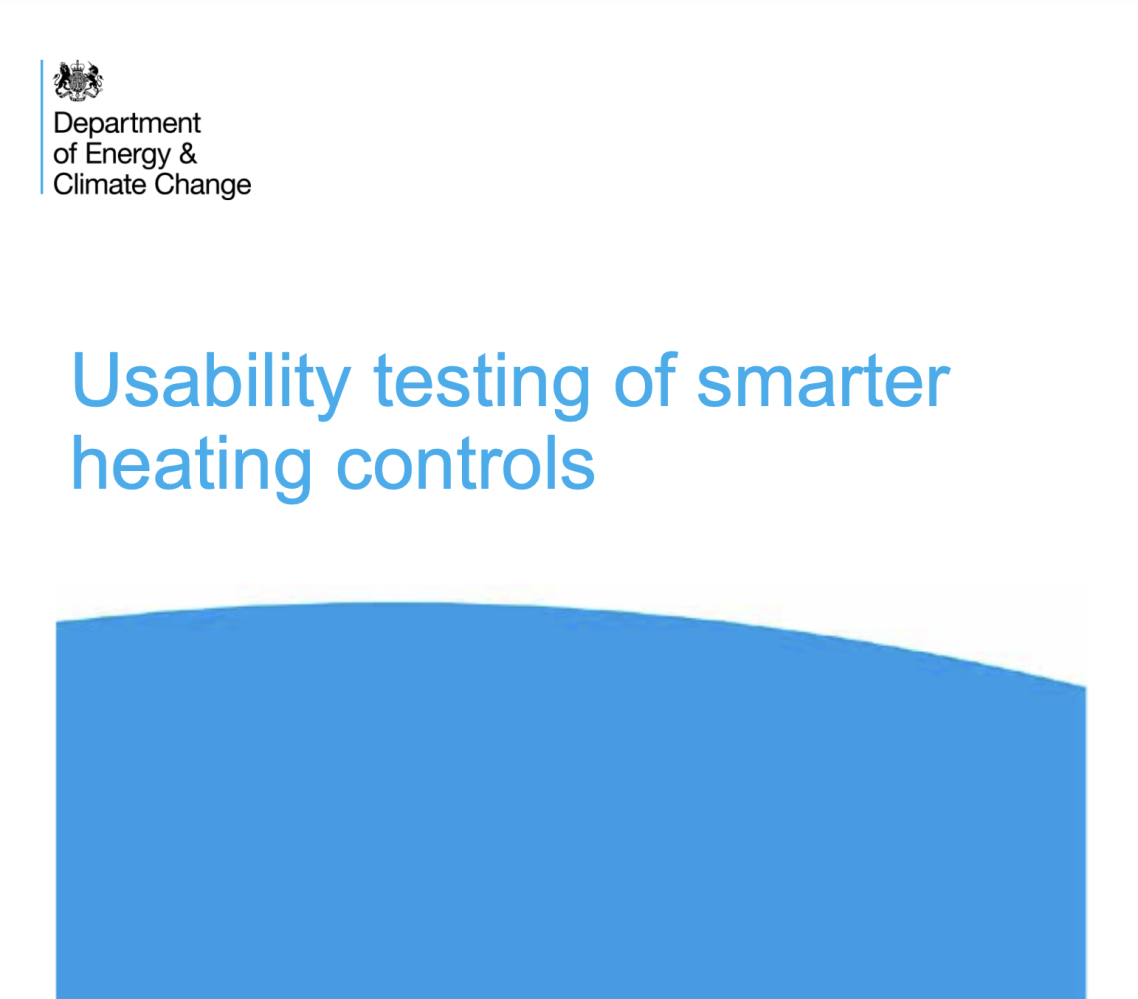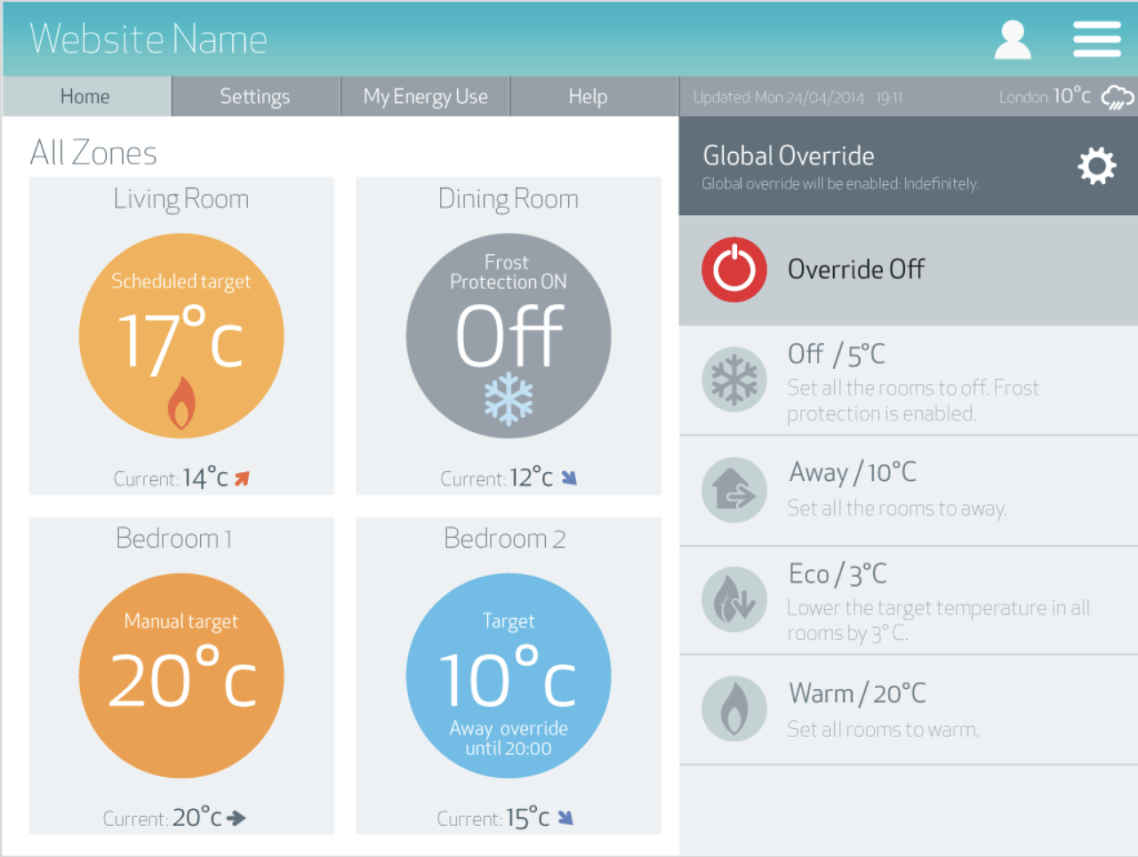Energy Catapult & DECC: Assessing the usability of Smart Heating Controls
Large scale usability benchmarking of 6 leading SHC products with 72 representative domestic users in the UK.
Brief
Help DECC and the Energy Catapult to understand the state of usability of smart heating products in the UK & whether they are likely to meet government targets of reducing domestic energy waste.
Approach
Extensive literature review to understand the UK domestic audience & home heating behaviours. Design of robust UX benchmarking methodology. Lab usability testing of 6 leading SHC systems with 72 representative domestic users in the UK.
Outcome
A detailed report on the results & conclusions published by DECC on the government website:
Project extended to include UX design for an optimised SHC UI that allows users to more easily complete critical energy saving tasks.

Specialised lab setup
To ensure a fair test of all 6 SHC systems, a robust & scientifically valid testing methodology was devised. A lab was then set-up to provide an equal footing for all 6 systems, whilst allowing the team to observe + record every user interaction with the desktop, mobile app & hardware control unit of each system.
Outcome: A usability lab with all the systems set-up and ready to use, simulating a real home scenario where the units are connected to a heating system & receiving input from thermostats around the home.
Quantitative UX benchmarks
The main research goal was to measure the level of usability, including observed task completion & efficiency, as well as user ratings for ease of use & satisfaction. The metrics were selected based on UX industry standards. A consistent measurement technique was then defined & the results included in the final published report.
Outcome: Results that clearly showed that basic tasks, critical for generating energy savings, were too difficult for the average user to complete without significant help.


Published report in collaboration with DECC.
The research team produced a detailed official report for the government, providing domain context, details of the methodology, key results & overall conclusions about the level of usability for SHCs. Specific recommendations were shared with industry partners who took part in the process.
Outcome: A professional summative usability report, making the findings available to the entire SHC industry & providing sufficient detail to enable the study to be replicated.
Smart heating control UX design
The Energy Catapult commisioned us to put what we learnt into practice & design a UX best practice prototype to illustrate how the critical tasks (e.g. setting up a schedule, setting the right temperature, monitoring, communicating feedback to the user etc.) could be simplified to encourage wider adoption & improved energy saving potential.
Outcome: A reference design that was shared with the SHC industry to demonstrate UX best practice.

©Copyright. All rights reserved.
We need your consent to load the translations
We use a third-party service to translate the website content that may collect data about your activity. Please review the details in the privacy policy and accept the service to view the translations.
